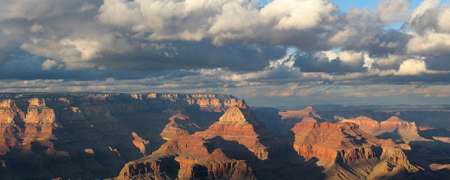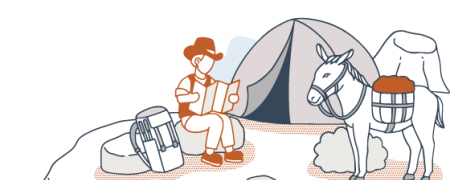Environment of the Grand Canyon
The North Rim of the Canyon at 8,000 ft. in elevation has Aspen Groves, large meadows, fir trees and a more alpine like environment. The South Rim has large stands of Ponderosa Pines, and Pinion Juniper forests due to an elevation of about 1,000 feet lower than that of the North Rim. As one descends towards the Canyon floor they will see an increasing number of desert plants as well as trees and shrubs found along the transitional zone. The lower in elevation you go the less annual precipitation the Canyon receives and the warmer the temperatures. When you reach the bottom of the canyon these climatic changes result in a lower Sonoran life zone like those of the Phoenix Valley. Here you will find numerous cacti and other Sonoran plants. There are also many microclimates within the Grand Canyon along the Colorado River or in riparian areas where giant cottonwoods, willow, and maidenhair ferns abound alongside variations in Grand Canyon weather.
The animal life the Grand Canyon has to offer is also quite impressive. The rims of the Canyon have some of the largest elk in the world, a healthy mountain lion population, and large herds of mule deer. You will also find other wildlife like javalina, bobcat, turkeys and coyotes, as well as the nearly extinct California condor. The Canyon also has species found nowhere else like the kaibab squirrel and Grand Canyon pink rattle snake. Below the rim you'll find ringtail cats, bighorn sheep, and all kinds of reptiles and birds. Perennial Creeks hold numerous species of amphibians, and the Colorado River is habitat for beavers, and several types of fish including the endangered humpback chub. The Grand Canyon is home to a huge array of life, and anyone who visits this amazing destination will surely appreciate the magnitude of its diversity.




